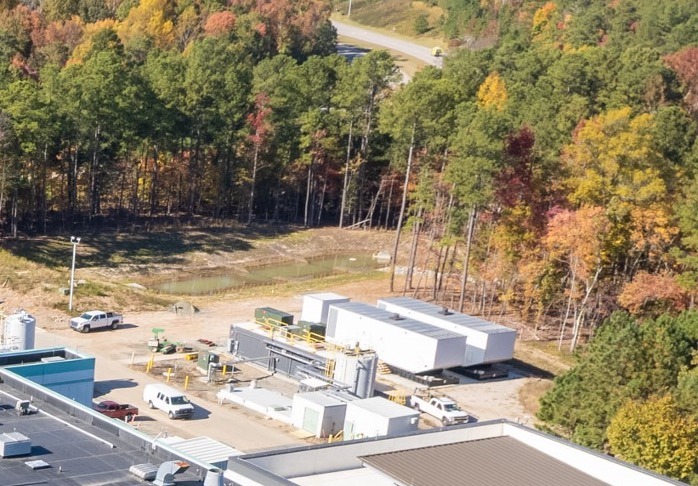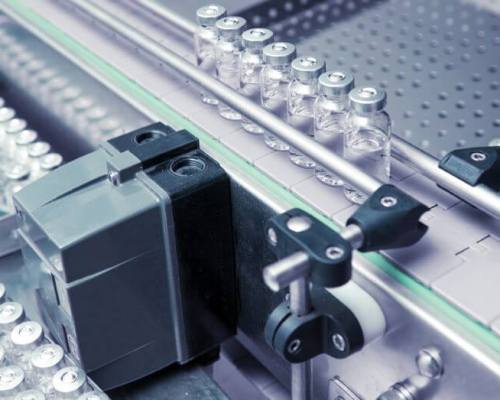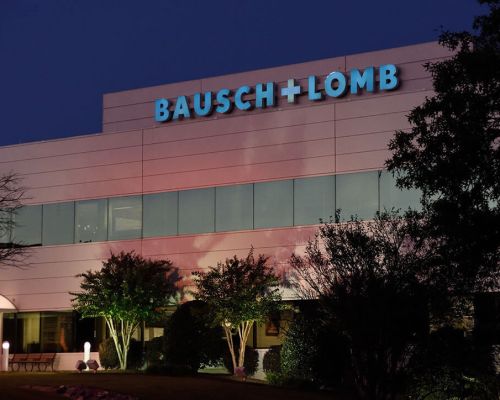FUJIFILM Diosynth Biotechnologies
FUJIFILM Diosynth Biotechnologies (FDB) is a leading global contract development and manufacturing organization, offering complete solutions ranging from preclinical investigations and process development to commercial production. For the pharmaceutical manufacturer’s facilities, unplanned power outages can impact everything from clinical test trials to product loss, making reliable backup power critical to its operations and overall success.
“Since the project was fully commissioned, we have had one extended power failure – and the backup power resiliency system performed flawlessly.” – Stephenie Robertson, VP of Operations
The Challenge
With the expansion of its facility, FDB recognized that its existing generators needed to be upgraded to continue to provide its same standard of backup readiness – meeting its current resiliency needs while providing the expansion capacity to meet future resiliency needs.
Additionally, they wanted to work with a provider they could trust – who would meet expectations and provide services to help alleviate the burden of owning and maintaining the resiliency equipment.
The Solution
Working with FDB, Duke Energy designed a resiliency system that provided 5 MW of backup generation for its existing facility and backup capacity for future expansions, providing them with added resiliency that would grow with the facility and company.
The services are also outsourced to Duke Energy for the entirety of the contract, alleviating FDB from the burden of regular testing, operations and maintenance of the equipment. As part of the managed services contract, Duke Energy will conduct 24/7 remote monitoring services to better protect the equipment from any unplanned outages and better ensure generator performance.
The Results
- More reliable, resilient backup power
- Price predictability
- Additional backup generation capacity for expansion site
- Elimination of risks associated with owning and maintaining the backup solution

More reliability. Price predictability. Less risk.
Increasing reliability and lowering risks at FDB’s facility didn’t just start (or end) with generators. The customized resiliency solutions provided room for growth as well as services that eliminated costly maintenance – all designed to help the pharmaceutical manufacturer preserve capital, create price predictability and budget certainty, stay up and running, and spend more time focusing on its essential business.
Increasing resiliency
To provide a more robust backup system, Duke Energy provided FDB’s facility with two 2,750-kW engines. The new generators are designed to back up the entire Morrisville facility as well as the lighting in the parking lot.
Less risk
To help shift risks associated with the maintenance of the resiliency equipment, Duke Energy deployed its design, build, own, operate and maintain (DBOOM) strategy. This strategy helped to create price predictability and budget certainty throughout the life of the contract.
Design: When designing the resiliency equipment, Duke Energy worked collaboratively with FDB’s internal teams to better ensure the solution addressed existing and potential concerns.
Build: Duke Energy managed all aspects of building the resiliency project from start to finish.
Own: Duke Energy capitalized the entire project, allowing FDB to shift its capital expenditures to revenue-generating assets.
Operate: Duke Energy commissioned the new project and assumes operational responsibility and risk for the life of the agreement.
Maintain: Duke Energy will continue to maintain the equipment throughout the term of the contract, helping to better ensure that all assets remain in peak condition.
Who We Are
The above project was performed by Duke Energy’s Business Energy Services team. Duke Energy Sustainable Solutions leverages these specialists to deliver innovative solutions to customers.



